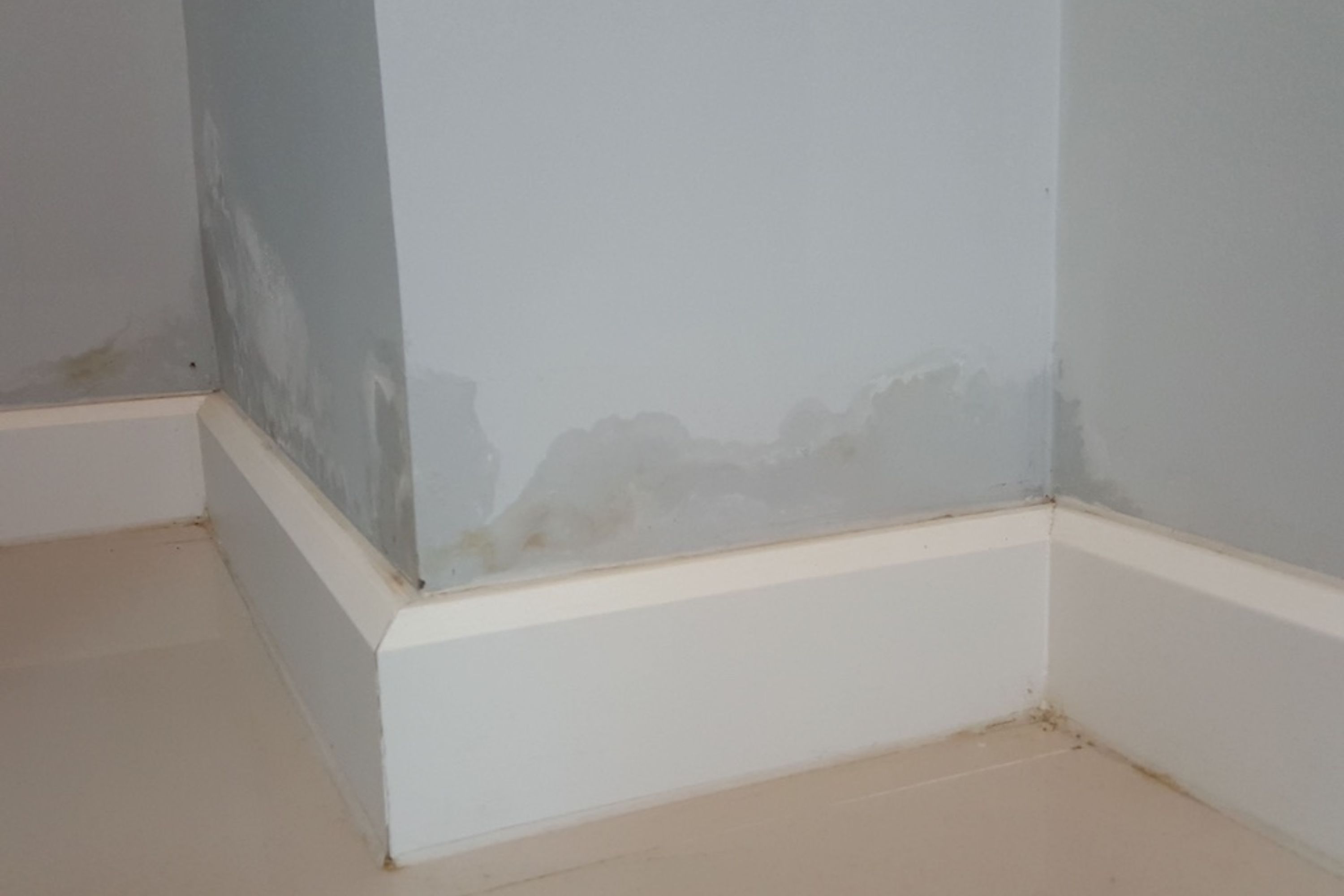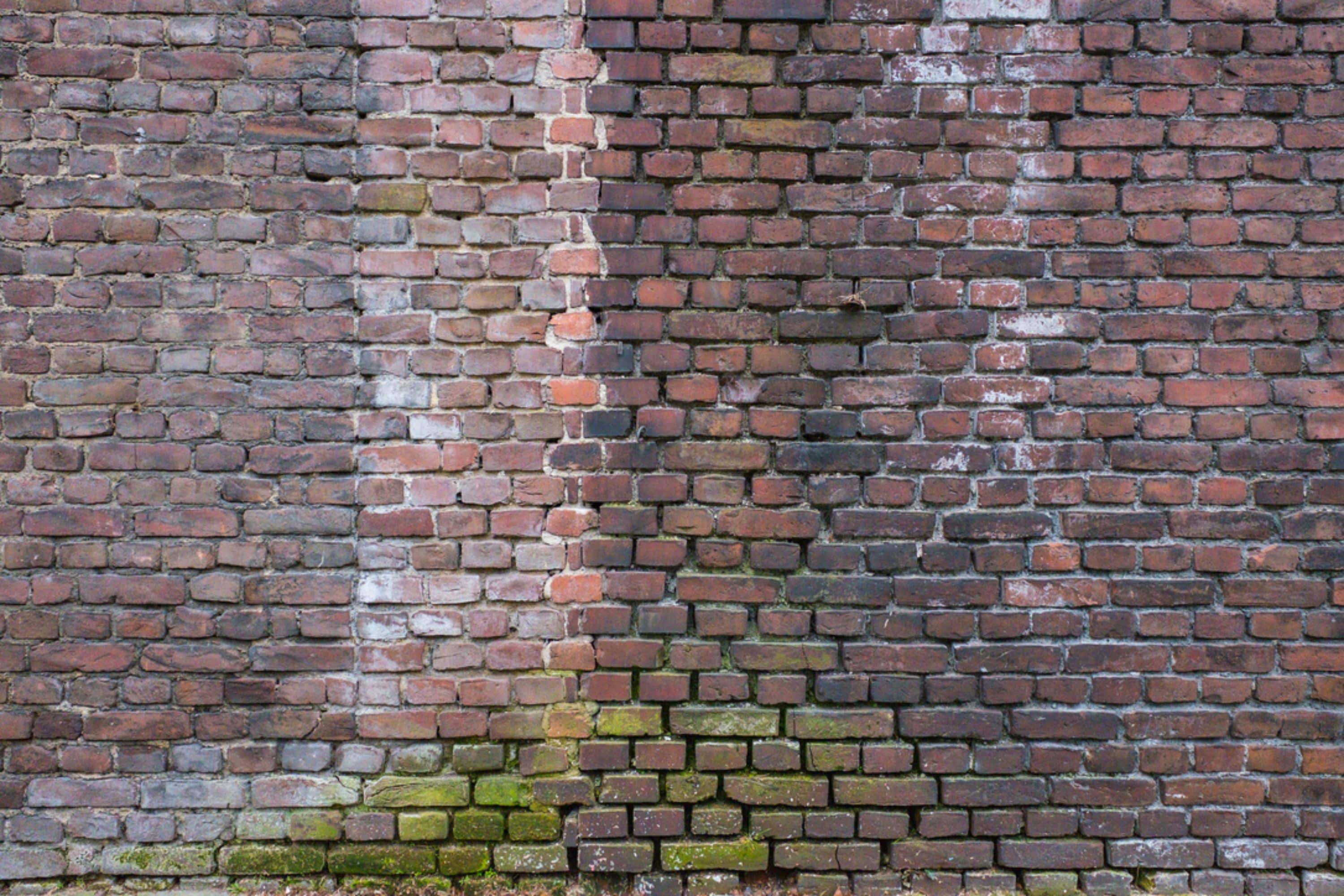Damp problems: solutions and prices
Damp indoors can have different causes and each of them requires a different kind of damp treatment. In this article you’ll find the most common damp problems, their causes, consequences and solutions.
Types of damp problems
If you want to get rid of damp problems, once and for all, it’s important to make the correct diagnosis first. A wrong judgement could have quite expensive consequences, without the problem being solved at all. Here you’ll read about the most common indoor damp problems and their treatment.
1. Rising damp
When you have damp patches at the bottom of your walls, you’re dealing with rising damp. This is caused by ground water that’s penetrating the walls, often caused by the lack of, or a badly functioning damp proof course. The walls absorb the ground water. Rising damp can be resolved in two ways:
Inject the walls
Damp problems caused by rising damp is often treated with wall injection. Holes are drilled into the damp walls in which a damp proofing gel is injected. This gel makes sure that the wall eventually dries out. Prices are from £ 90 per meter. Read here more on injecting walls.
Horizontal wall cutting and placing a new damp proof course
This is a labour-intensive and invasive technique, in which horizontal grooves are cut all the way through the wall. In these grooves a damp proof layer is placed, which stops the water from entering the walls. Prices are from £ 90 per meter.
Read more on causes and treatments of rising damp.

2. Penetrating damp
If there are clear damp patches on your inner and outer walls, you’re dealing with penetrating damp. This kind of damp problem occurs most often in older buildings where, as a result of wear some facade material (brickwork or plaster) becomes porous. The wall coating is no longer able to repel water, but will absorb it instead. Penetrating damp can be resolved in 2 different ways:
Impregnate the walls
When you’re dealing with penetrating damp, this can often be solved quickly by impregnating the walls with an invisible coating. This coating will prevent water from penetrating the walls. Impregnating walls can cost around £10 per m² (any possible cleaning or repair not included).
New wall coating
If your facade is in a very bad state, it is recommended to place new wall coating. With an eye to an energy-efficient house, you can combine these works with placing insulation.
Prefer bringing in a damp expert? Request your free quotations here.

3. Damp problems due to condensation
Damp problems can not only be attributed to flaws in the construction work. Internal factors, such as a lack of ventilation or damage could also cause indoor damp problems. Condensation for example.
If there are damp patches or mould in your kitchen, bathroom or bedroom, you’re probably dealing with condensation. This type of damp problem is caused by a large amount of steam when you cook, shower or bathe.
When this steam is not properly removed, it will condense on your walls with all its consequences. This is easily solved by ventilating the building on a regular basis. When your house is well-insulated and when ventilating isn’t always an option, we recommend installing a ventilation system. More on condensation and its treatment here.
Are you dealing with condensation and do you wish to solve this by installing such a ventilation system? Via our quotation service you can ask our experts for free price offers. Click for more info.
4. Damp indoors due to leaks in pipes
If your damp problem cannot be explained with the above-mentioned causes, there’s a big chance that there’s a leak in one of the pipes. Now, the discovery of these kinds of leaks is easier said than done, because the consequences are often only visible after months or even years.
When you don’t immediately find the cause of your damp problems, you can always leave it to a damp expert to perform a leak detection. He will bring a special damp meter and detect the existing damp problems. Prices for a thorough leak detection can go from £ 250.
5. Construction damp
When building a traditional building, a lot of water is used. It can take more than a year for your house to completely dry out. It could have some nasty consequences when this is not taken into account. The plaster work could come loose, for example, or mould could be formed in damp spaces. When treating construction damp, you can use a dehumidifier and ventilate your home as often as possible.
Importance of the right diagnosis
As you can see, there are different things that can cause damp problems. So in order not to make any unnecessary costs, it’s important that a correct analysis is made first. Do you want to be absolutely sure, then we recommend asking several diagnoses from different experts. That way you can compare their respective solutions, but their prices and expertise as well.
Do you want to treat your damp problems and are you curious as to how much this could cost you? Us our quotation service to ask several tailor-made price offers. Click for more info.
